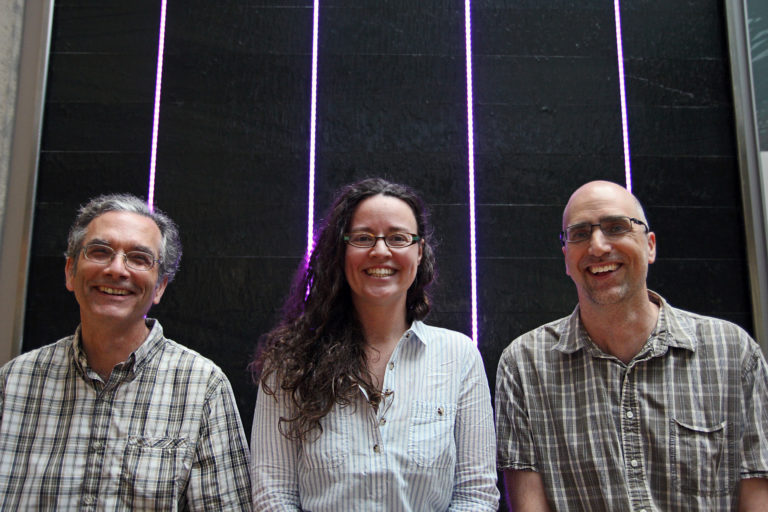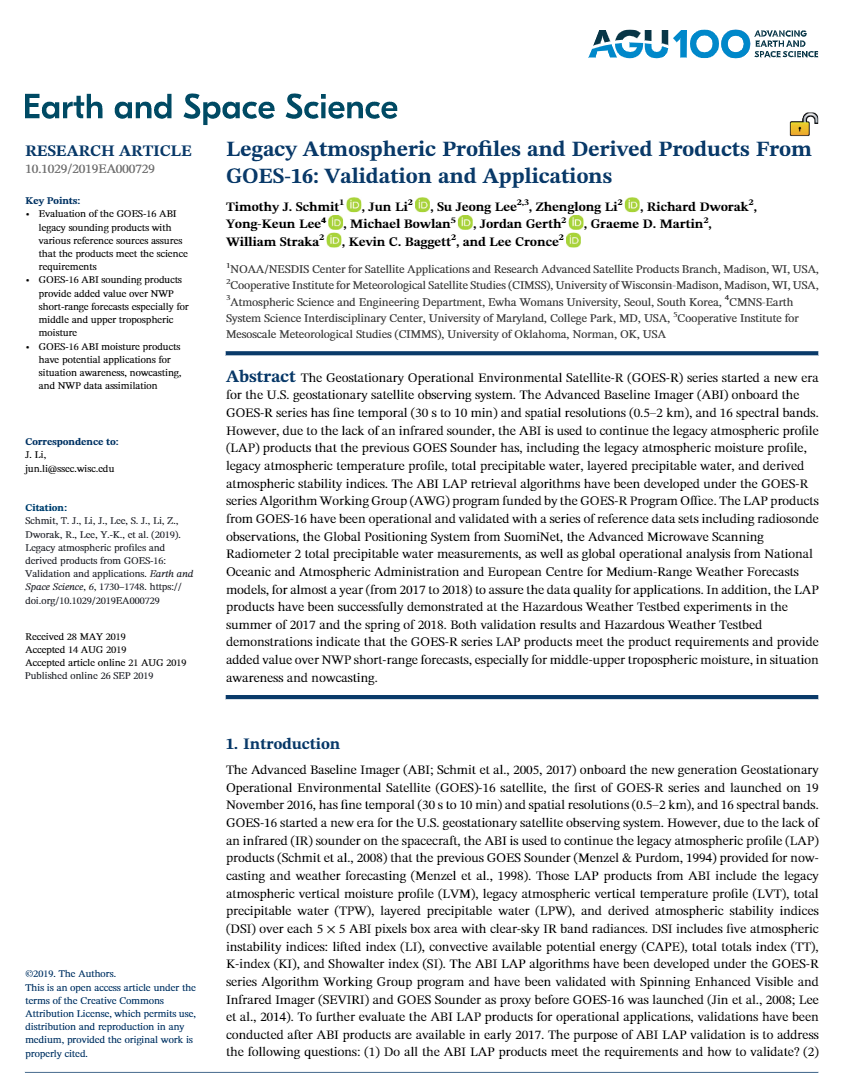
[ Archive ]

 |
CIMSS-NOAA Weekly Report [ Archive ] |
 |
ASPB AND CIMSS WEEKLY HIGHLIGHTS FOR THE WEEK ENDING OCTOBER 18, 2019
IN THE PRESS:
SSEC and CIMSS Scientists in the News: Scientists at the University of Wisconsin-Madison (UW) Space Science and Engineering Center (SSEC) and the Cooperative Institute for Meteorological Satellite Studies (CIMSS) provide expert commentary, interviews, and imagery to news media and participate in events to promote science. In the news this week: 1) SSEC scientists Norm Wood and Claire Pettersen, along with NOAA ASPB scientist Mark Kulie, who is based at SSEC, are working on independent, but related, studies of snowfall as part of the new NASA Precipitation Measurement Missions (PMM). Their investigations all focus on snowfall to understand how these events are linked to regional – and global – hydrology. SSEC News published this story: https://www.ssec.wisc.edu/news/articles/12289. 2) CIMSS Satellite Blog contributor Scott Bachmeier published posts on “Remnants of Typhoon Hagibis over the Bering Sea" (Oct. 14) and the "Early-season winter storm in the Northern Plains" (Oct. 12). Read more at the CIMSS Satellite Blog: http://cimss.ssec.wisc.edu/goes/blog/. (N. Wood, SSEC, C. Pettersen, SSEC, M. Kulie, E/RA2, S. Bachmeier, CIMSS, J. Phillips, SSEC, 608-262-8164)
 (Click image to enlarge)
(Click image to enlarge)
Figure: SSEC scientists Norm Wood (left), Claire Pettersen (center) and NOAA ASPB scientist Mark Kulie (right) are investigating snowfall events as part of the new NASA Precipitation Measurement Missions. Credit: Bill Bellon.
 (Click image to enlarge)
(Click image to enlarge)
Figure: GOES-16 “Red” Visible (0.64 µm) images showed an early winter storm in the Northern Plains during daylight hours on Oct. 10-12, 2019. Credit: CIMSS.
ITEMS FOR THE ADMINISTRATOR:
ITEMS FOR THE ASSISTANT ADMINISTRATOR:
ITEMS FOR THE OFFICE DIRECTOR, STAR:
GOES-16 Soundings Validation Paper Published: A paper was published in Earth and Space Science. The title is "Legacy Atmospheric Profiles and Derived Products From Geostationary Operational Environmental Satellite (GOES)‐16: Validation and Applications". The authors are T. Schmit, J. Li, S. J. Lee, Z. Li, R. Dworak,Y.K. Lee, M. Bowlan, J. Gerth, G. D. Martin, W. Straka, K. Baggett, and L. Cronce. The paper can be found at https://agupubs.onlinelibrary.wiley.com/doi/epdf/10.1029/2019EA000729. (T. Schmit, E/RA2, 608-263-0291; Jun Li, CIMSS)
 (Click image to enlarge)
(Click image to enlarge)
Figure: The first page of "Legacy Atmospheric Profiles and Derived Products From Geostationary Operational Environmental Satellite (GOES)‐16: Validation and Applications".
ITEMS FOR THE DIVISION CHIEF, CoRP:
Presentation on Satellite-derived Winds Given at American Indian Science and Engineering Society Conference: A presentation on satellite derived winds was given at American Indian Science and Engineering Society Conference (AISES) in Milwaukee WI. The title of the talk was "Wind structure in vicinity of a tornadic thunderstorm deduced from cloud motion in satellite and radar imagery using an optical flow technique. (B. Rabin, NSSL & CIMSS, 405-325-6336)
Industry Invited Speaker: Jim Kossin (NCEI at CIMSS) gave an invited presentation on extreme storms and climate change at the 2019 ILS Bermuda Convergence meeting. The meeting brings more than 200 professionals from the insurance-linked securities and reinsurance NOAA stakeholder sectors. The meeting was held in Hamilton, Bermuda during the week of 7 October. (J. Kossin, NCEI/CWC, 608-265-5356)
How to View Gridded Fields of NUCAPS Temperatures/Moisture: A Cooperative Institute for Meteorological Satellite Studies (CIMSS) Satellite Blog post this week (http://cimss.ssec.wisc.edu/goes/blog/archives/34692) instructed users on how to use Polar2Grid software (https://www.ssec.wisc.edu/software/polar2grid/, developed at SSEC) to create horizontal fields of atmospheric thermodynamic information from NOAA-Unique Combined Atmospheric Processing System (NUCAPS) profiles that are created from Community Software Processing Package (CSPP) software with access to a Direct Broadcast antenna. Polar2Grid also works on data downloaded from the NOAA CLASS archive at https://www.avl.class.noaa.gov/saa/products/welcome. NUCAPS data are available from four separate satellites (Suomi-NPP, NOAA-20, Metop-A, and Metop-B) that take global hyperspectral infrared and microwave observations. (S. Lindstrom, CIMSS, 608 263 4425)
VISITORS:
NEXT WEEK:
LOOKING AHEAD:
| Archived Weeklies Page | Submit a report item |